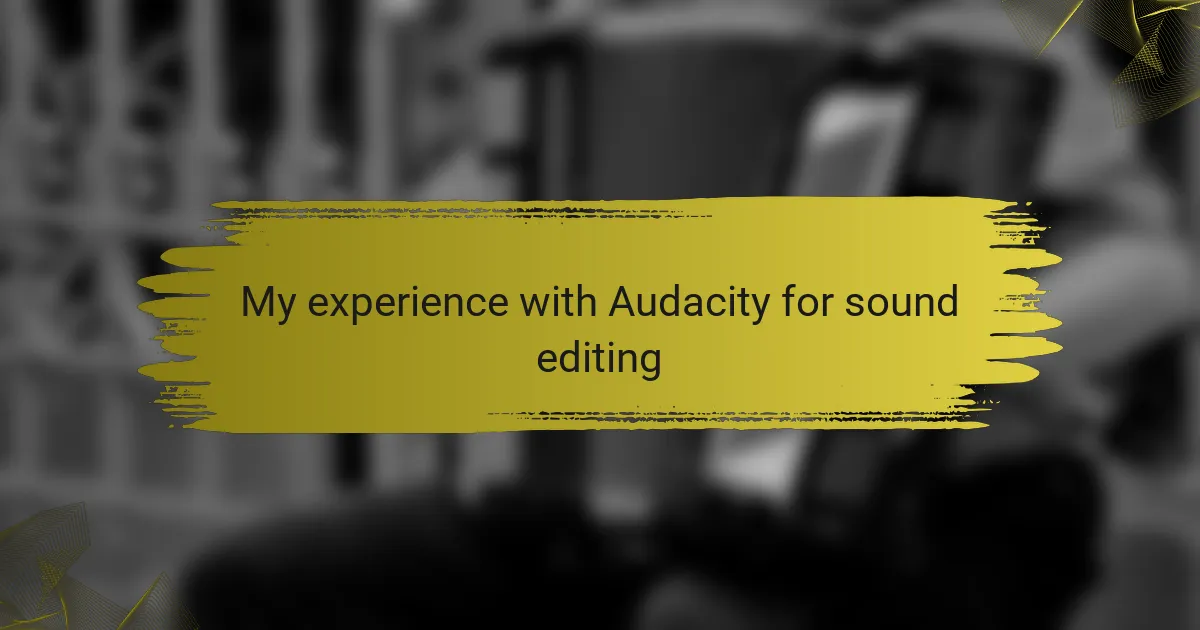Key takeaways
- Audacity is a powerful, user-friendly, and free sound editing tool ideal for independent media creators.
- Understanding sound editing basics, such as waveforms and decibels, is essential for enhancing audio quality.
- Key features of Audacity include multi-track editing, a variety of effects, and strong community support.
- Effective sound editing requires critical listening, familiarity with tools, and regular backups of your work.
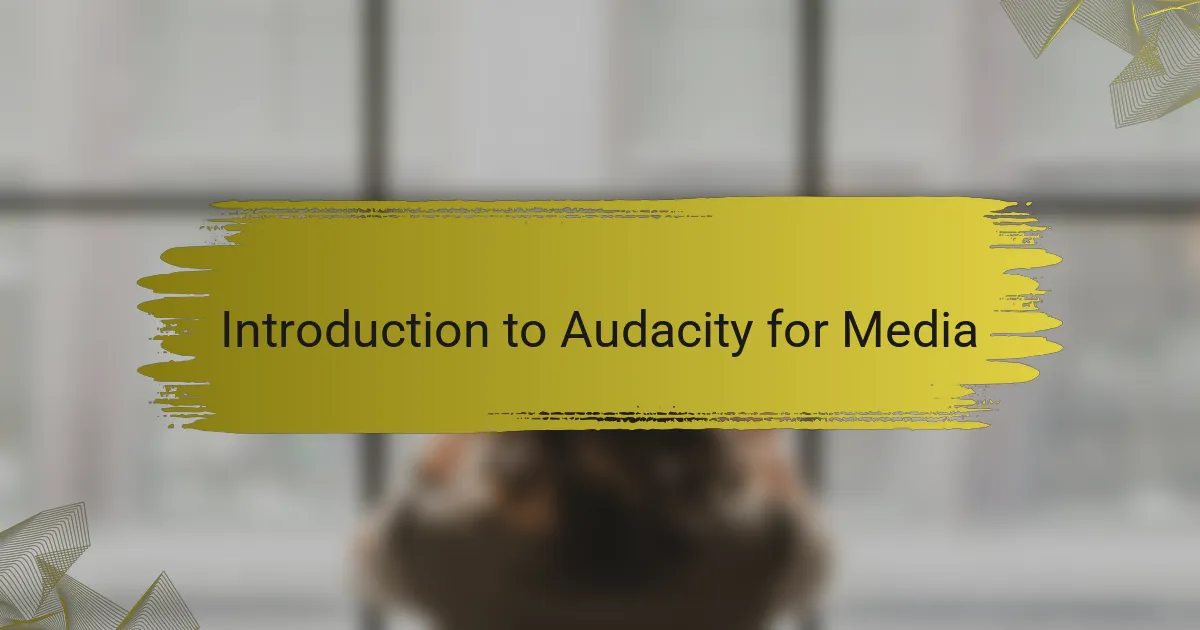
Introduction to Audacity for Media
When I first stumbled upon Audacity during my journey in independent radio media, I was immediately drawn to its user-friendly interface and robust features. It felt exciting to find a sound editing tool that was both powerful and free. I vividly remember the first time I layered tracks to create a more dynamic audio experience; it was almost like uncovering a new dimension in my creative process.
Here’s a quick overview of what makes Audacity a standout choice for media creators:
- Cost-Effective: Being open-source, Audacity offers a wide range of features without any financial burden.
- User-Friendly Interface: Even newcomers can navigate it easily, which I found encouraging when I started.
- Multi-Track Editing: The ability to work with multiple audio tracks simultaneously is invaluable for producing complex sound pieces.
- Extensive Format Support: With support for various audio formats, I never worry about compatibility issues.
- Community Support: The active community around Audacity provided me with numerous tutorials and resources, helping me overcome initial hurdles.
Using Audacity has transformed how I approach sound editing, enabling me to express my creativity while staying within my means.

Understanding Sound Editing Basics
Understanding sound editing is crucial for anyone venturing into the realm of independent radio media. During my journey with Audacity, I quickly realized that the basics of sound editing weren’t just technical jargon – they were skills that influenced the overall quality of my broadcasts. I’ve learned that simple techniques, like trimming silence or balancing audio levels, can significantly enhance the listener’s experience.
To put things into perspective, I found that having a grasp on sound editing terms can demystify the process. For instance, understanding concepts like “waveform” and “decibel” can help budding audio editors feel more confident in their choices. The learning curve can feel steep at times, but the satisfaction of producing clear, engaging audio makes it all worthwhile.
| Sound Editing Concept | Description |
|---|---|
| Waveform | A visual representation of sound waves, showing how sound varies over time. |
| Decibel (dB) | A unit of measurement for sound intensity; crucial for ensuring clarity without distortion. |
| Fade In/Out | Gradually increasing or decreasing audio volume at the start or end of a track for smoother transitions. |
| Trimming | Cutting unnecessary parts of audio to improve flow and engagement. |
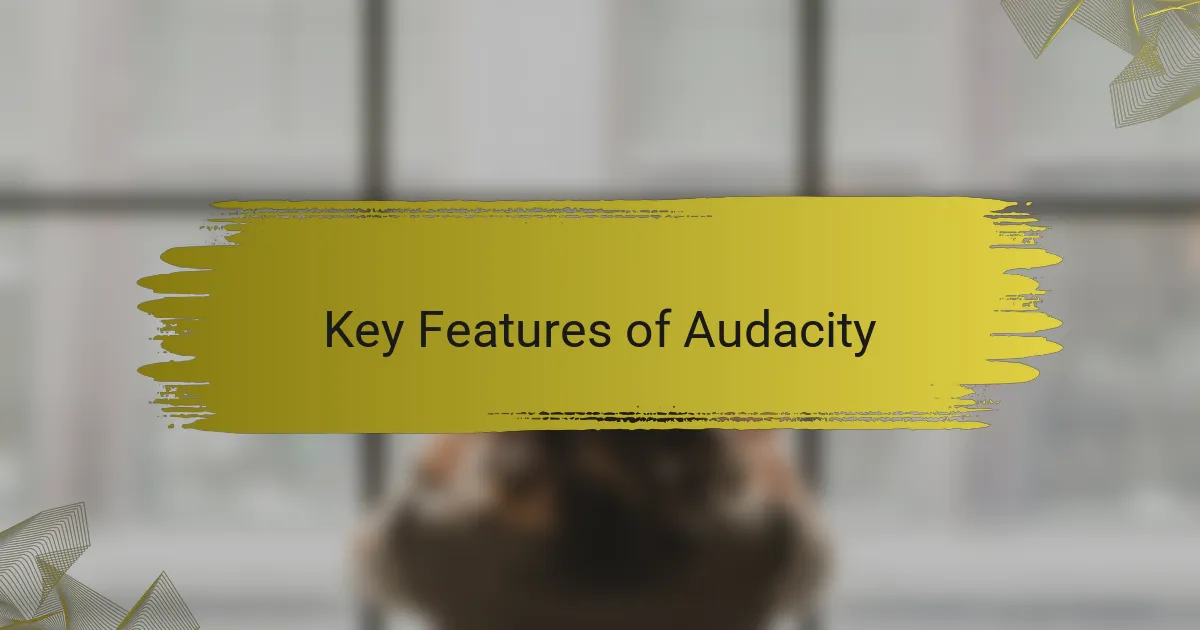
Key Features of Audacity
Audacity has become my go-to tool for sound editing because of its user-friendly interface and powerful features. One of the standout aspects for me is its multi-track editing capability, which allows me to layer different audio clips seamlessly. This has been invaluable in my independent radio projects, enabling me to create rich, textured soundscapes that really engage my audience.
I particularly appreciate the range of effects available, like noise reduction and equalization, which have significantly improved the overall quality of my recordings. It’s like having a professional studio at my fingertips! Here’s a quick overview of some key features that have made my experience with Audacity so rewarding:
- Multi-track editing for layering and arranging audio
- Wide variety of effects including reverb and compression
- User-friendly interface that simplifies the editing process
- Support for numerous audio formats, making importing and exporting easy
- Real-time effect previewing to hear changes instantly
- Comprehensive tools for voice recording, making it ideal for podcasts
- Active community support and extensive documentation available online
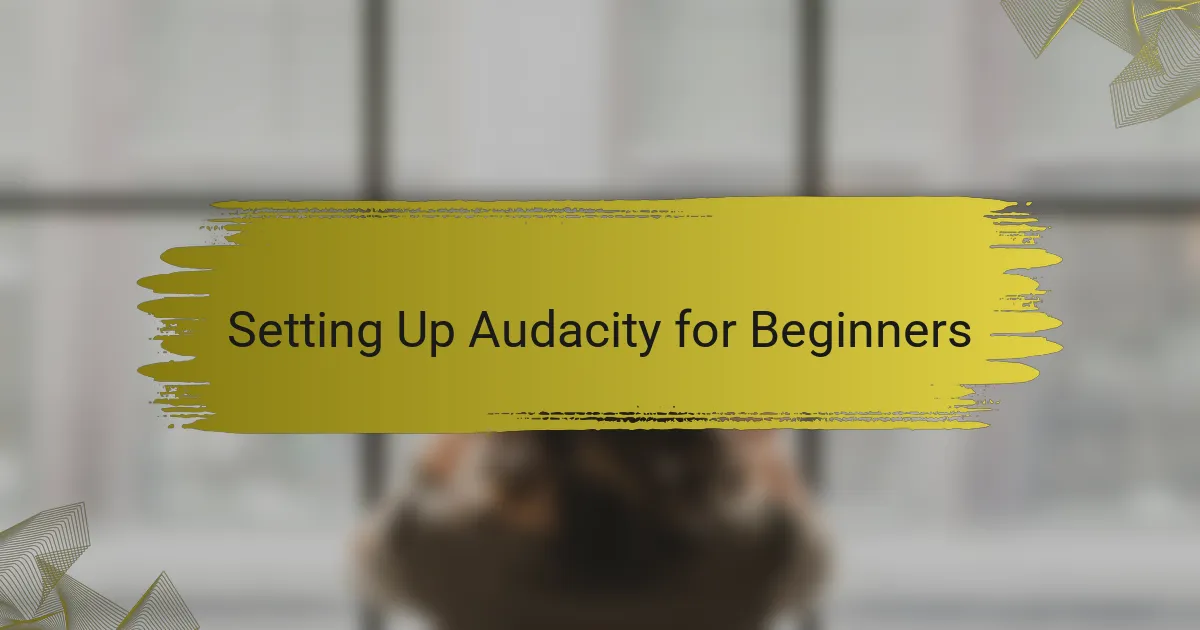
Setting Up Audacity for Beginners
Setting up Audacity as a beginner can feel a bit daunting at first, but trust me, once you get the hang of it, it’s quite simple. I remember the rush of excitement when I installed Audacity for the first time. The first step is downloading it from the official website. I highly recommend you stick to the latest version to ensure you have access to all the new features and bug fixes.
After installing, take a moment to familiarize yourself with the layout. I found the toolbar and menu options intuitive, which made the learning curve a little less steep. It’s like walking into a new room; at first, it might feel overwhelming, but soon enough, you start recognizing the furniture. Don’t hesitate to explore the preferences menu – this is where you’ll set up your audio devices, which is essential for optimal recording quality.
Lastly, dive into the audio settings. From adjusting input levels to setting sample rates, this is where you tailor Audacity to fit your needs. I vividly remember fiddling with these settings and how thrilled I felt when I achieved that perfect sound balance for my first podcast episode. Remember, every tweak brings you closer to the audio experience you envision.
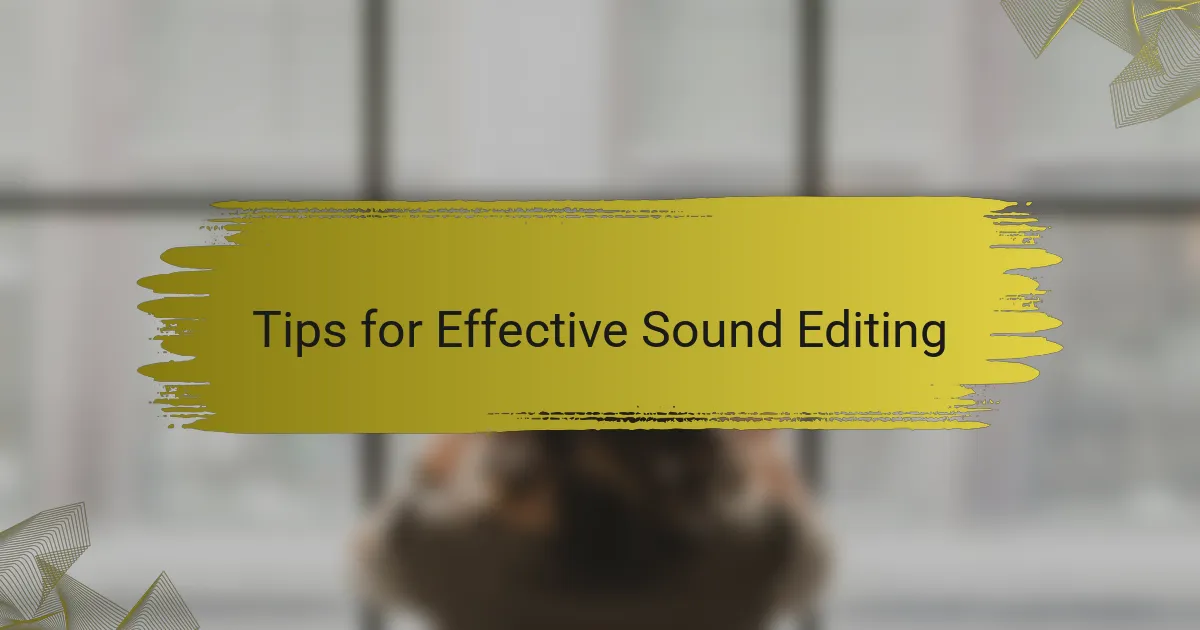
Tips for Effective Sound Editing
One of my best tips for effective sound editing is to always listen critically. After spending hours editing audio in Audacity, I learned that my ears can sometimes play tricks on me. I found that taking a break and returning with fresh ears made a huge difference in catching subtle issues like awkward silence or overlapping dialogue.
Another key aspect is to get familiar with the various tools within Audacity. I remember initially feeling overwhelmed by the interface, but once I took the time to experiment with features like noise reduction and equalization, I could really refine my audio quality. It’s a bit like cooking – the right ingredients and techniques make all the difference in the final dish.
Lastly, always save backups of your work! One time, I lost a nearly finished project due to a technical glitch, and I vowed never to let that happen again. I now create multiple versions of my files, especially before making significant changes. It truly saves you from a lot of stress.
| Tips | Details |
|---|---|
| Critical Listening | Take breaks and return with fresh ears for better audio quality. |
| Familiarity with Tools | Experiment with features like noise reduction to enhance your audio. |
| Backup Your Work | Create multiple versions of your files to avoid losing progress. |

My Personal Experience with Audacity
Using Audacity has been an intriguing journey for me. I still remember the thrill I felt when I first played around with its features. The first time I imported and edited a track is etched in my mind. It was surreal to hear my adjustments transform the sound, giving it depth and clarity. Have you ever had that moment when something you create feels alive? That’s exactly how I felt.
One experience that stands out is when I worked on a project that required layering multiple audio clips. I initially felt overwhelmed by the complexity, but as I delved into Audacity’s multi-track editing, it became like piecing together a puzzle. Each track brought its own personality to the mix, and I felt a sense of accomplishment as the audio began to take shape. It was empowering to realize that I could turn a simple idea into a rich audio tapestry.
I also learned the importance of patience through my experience with Audacity. I recall a particularly long editing session where I kept tweaking the same segment, trying to perfect it. In those moments, I often had to remind myself that good things take time. There’s a certain satisfaction in taking the extra effort to ensure everything sounds just right. After all, the goal is to craft an auditory experience that resonates with listeners. Have you explored that kind of dedication in your work? It’s quite rewarding!
